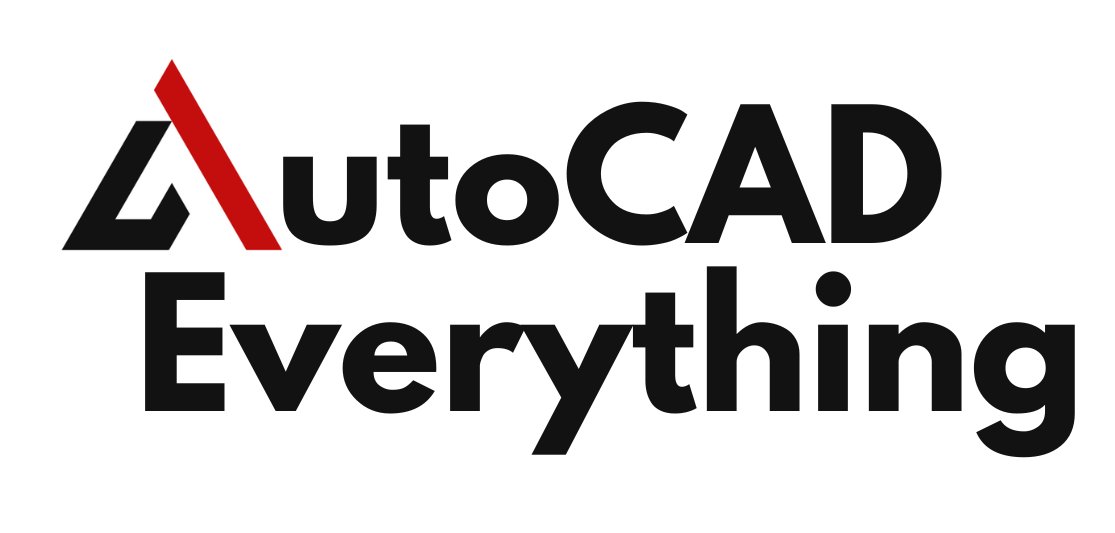Introduction
AutoCAD is a term synonymous with modern design and engineering. Since its inception, it has revolutionized the way architects, engineers, and designers create, modify, and share technical drawings and designs. But what exactly is AutoCAD? How did it come to be the powerful tool it is today? This article provides a comprehensive overview of AutoCAD, tracing its history from the early days of computer-aided design to its current status as an industry-standard software. We will explore its origins, the key milestones in its development, and how it has continuously evolved to meet the needs of professionals across various industries.
Table of Contents
What is AutoCAD?
AutoCAD, short for “Automatic Computer-Aided Design,” is a software application developed by Autodesk. It is used to create 2D and 3D design and drafting. Initially released in December 1982, AutoCAD was one of the first CAD programs that allowed designers to use personal computers rather than large, mainframe computers. This innovation brought significant changes to the fields of architecture, engineering, and manufacturing, where precision, accuracy, and efficiency in design are crucial.
AutoCAD enables users to create precise technical drawings and models with a variety of tools. These include basic drawing tools for lines, circles, and arcs, as well as more complex features like 3D modeling, rendering, and automation of repetitive tasks. The software’s versatility and wide range of applications have made it a standard in many industries.
The Origins of AutoCAD
The story of AutoCAD begins with Autodesk, a company founded by John Walker and a group of programmers in 1982. The initial idea was to create a CAD program that could run on the emerging personal computers, making the technology accessible to a broader audience. Prior to this, CAD systems were expensive and required specialized hardware, limiting their use to large corporations and government institutions.
The first version of AutoCAD was a game-changer. It was launched at the COMDEX trade show in Las Vegas in 1982 and quickly gained popularity due to its affordability and ease of use compared to existing CAD systems. AutoCAD 1.0 offered basic design features, but its ability to operate on a personal computer was its most significant selling point.
Early Development and Features
AutoCAD’s early versions were relatively simple, focusing on basic 2D drafting tools. The software’s core functionality included drawing lines, arcs, and text. It also introduced the concept of “layers,” which allowed users to organize different elements of a drawing on separate layers, making it easier to manage complex designs.
One of the key features that set AutoCAD apart was its command line interface. This allowed users to type in commands directly, giving them precise control over the design process. Although the graphical user interface (GUI) was not as sophisticated as it is today, the command line remains a powerful tool in AutoCAD, beloved by many professionals for its speed and accuracy.
The Rise of 2D Drafting
Throughout the 1980s and early 1990s, AutoCAD became the go-to tool for 2D drafting. Its ability to replace manual drafting with a digital alternative offered unprecedented precision and efficiency. Engineers, architects, and designers could now create detailed technical drawings on a computer, which could be easily edited, copied, and shared.
During this period, Autodesk focused on improving the software’s core functionalities. They introduced features such as block creation, which allowed users to create reusable components, and dimensioning tools, which provided precise measurements for technical drawings. These enhancements made AutoCAD an essential tool for anyone involved in technical design.

The Introduction of 3D Modeling
As technology advanced, so did the capabilities of AutoCAD. In the mid-1990s, Autodesk introduced 3D modeling features to the software. This was a significant evolution, as it allowed users to create three-dimensional objects and structures, expanding the scope of what could be designed with AutoCAD.
The introduction of 3D modeling opened new possibilities for industries such as architecture, engineering, and industrial design. Users could now visualize their designs in three dimensions, perform simulations, and even create realistic renderings of their projects. This made AutoCAD not just a drafting tool, but a comprehensive design solution.
AutoCAD’s Evolution Over the Years
The evolution of AutoCAD over the past few decades has been marked by continuous improvements and the addition of new features. Autodesk has consistently updated the software to incorporate the latest technological advancements and to meet the changing needs of its users.
Some of the key milestones in AutoCAD’s evolution include:
- AutoCAD 2000: Introduced a more user-friendly interface, including toolbars and enhanced plotting capabilities.
- AutoCAD 2004: Focused on improving file size efficiency and added new productivity tools.
- AutoCAD 2007: Significantly improved 3D modeling tools, making them more accessible and powerful.
- AutoCAD 2010: Introduced parametric drawing, which allows for the creation of intelligent objects that automatically adjust based on constraints.
- AutoCAD 2013: Enhanced cloud integration, allowing for better collaboration and storage options.
- AutoCAD 2020 and Beyond: Focused on integrating AI and machine learning to enhance design capabilities and automate routine tasks.
AutoCAD in the Age of Cloud Computing
The advent of cloud computing has had a profound impact on AutoCAD. In recent years, Autodesk has shifted towards a subscription-based model, offering AutoCAD as part of its cloud services. This allows users to access the software from anywhere with an internet connection and facilitates collaboration by enabling multiple users to work on the same project simultaneously.
Cloud-based AutoCAD also integrates with other Autodesk products and third-party applications, making it easier to manage projects, share files, and streamline workflows. This evolution has made AutoCAD more flexible and scalable, accommodating the needs of both small businesses and large enterprises.
The Role of AutoCAD in Modern Design
Today, AutoCAD remains a critical tool in various industries. It is used extensively in architecture, engineering, construction, manufacturing, and more. The software’s ability to handle complex designs, create detailed technical drawings, and integrate with other tools makes it indispensable for professionals who require precision and efficiency.
AutoCAD’s role in modern design extends beyond just drafting. It plays a key role in project planning, simulation, and visualization. With its advanced 3D modeling and rendering capabilities, designers can create realistic representations of their projects before they are built, reducing errors and improving outcomes.
AutoCAD’s Influence on the CAD Industry
AutoCAD’s influence on the CAD industry is undeniable. As one of the first widely adopted CAD programs, it set the standard for what computer-aided design software should be. Many of the features and concepts introduced by AutoCAD, such as layers, blocks, and the command line, have become standard in other CAD applications.
Moreover, AutoCAD’s success has spurred the development of a wide range of specialized software tailored to specific industries. Autodesk itself offers numerous products built on the AutoCAD platform, each designed to meet the needs of professionals in areas such as civil engineering, electrical design, and mechanical drafting.
The Future of AutoCAD
As technology continues to evolve, so too will AutoCAD. The future of AutoCAD will likely involve even greater integration of artificial intelligence, machine learning, and cloud-based services. These technologies will enhance the software’s ability to automate repetitive tasks, improve design accuracy, and facilitate collaboration.
Autodesk is also likely to continue expanding the software’s capabilities in 3D modeling, simulation, and visualization. As industries demand more complex and integrated design solutions, AutoCAD will need to adapt to meet these challenges, ensuring it remains at the forefront of the CAD industry.
Suggested Read- AutoCAD for Beginners
FAQs
What industries use AutoCAD?
AutoCAD is used across a wide range of industries, including architecture, engineering, construction, manufacturing, and interior design. It is essential for creating technical drawings, drafting plans, and designing complex structures and systems.
How has AutoCAD evolved over the years?
AutoCAD has evolved significantly since its inception in 1982. It started as a simple 2D drafting tool and has grown into a comprehensive design solution with advanced 3D modeling, rendering, and cloud-based collaboration features. Key updates have included the introduction of parametric drawing, improved 3D capabilities, and enhanced user interfaces.
What are the main features of AutoCAD?
The main features of AutoCAD include 2D drafting, 3D modeling, rendering, parametric design, layer management, and cloud integration. The software also offers tools for automation, customization through scripting, and a wide range of productivity enhancements.
Why is AutoCAD important in design and engineering?
AutoCAD is important because it provides professionals with the tools needed to create precise and detailed technical drawings and models. Its versatility allows it to be used in a variety of applications, from architectural blueprints to engineering schematics, making it a critical tool in the design and engineering fields.
Can AutoCAD be used on multiple devices?
Yes, with the advent of cloud computing, AutoCAD can be accessed on multiple devices. Autodesk’s subscription model allows users to use AutoCAD on different computers, and even on mobile devices through AutoCAD mobile apps, providing flexibility and enhancing collaboration.
What is the future of AutoCAD?
The future of AutoCAD will likely involve more integration with AI and machine learning, further enhancements in cloud-based collaboration, and continued development of 3D modeling and simulation capabilities. These advancements will help AutoCAD remain a leading tool in the CAD industry.
Conclusion
AutoCAD has come a long way since its introduction in the early 1980s. From a pioneering CAD program on personal computers to a sophisticated design tool integrated with the latest technology, its evolution is a testament to Autodesk’s commitment to innovation. AutoCAD continues to be an indispensable tool for professionals in a variety of industries, shaping the way we design and build the world around us. As we look to the future, AutoCAD is poised to remain at the cutting edge of design and engineering, driving new possibilities in creativity and precision.

